
If you don’t want other people to be bothered by the loud volumes from your home theater, soundproofing is the answer. There are different ways to soundproof your home theater but be careful as some may not completely perform sound absorption. Our sound engineers came up with tried and tested ways for your home theater rooms’ soundproofing.
Understanding How Sound Travels in a Home Theater
Before proceeding with the meat of this discussion, we must first understand the way how sound travels affects your home theater setup. Sound travels in the form of waves, hence the term sound waves. When these sound waves come across a solid object, like the wall of a room, they will be absorbed but most will travel through vibrations.
If your home theater room has a good subwoofer, then it can produce high-quality low-frequency sounds. However, these low frequencies present more problems as they have a higher chance of traveling through a solid object and giving out stronger vibrations.
Our experts say that most of the things in your home have a sound transmission class (STC) value. This describes the ability of an object in absorbing sound waves. When you want to soundproof a home theater, you use the STC value to determine the amount of sound it will absorb.
For instance, drywall has an STC value of 40, so it’s no surprise that you can hear the sound coming from the other room. Applying soundproof materials in your home theater will help reduce the sound escaping to another room.
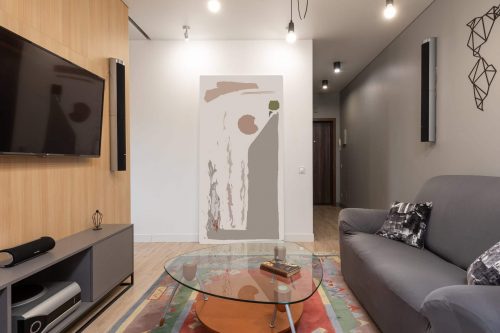
A regular theater has an STC of at least 60, that is why even if it is loud inside, the sound is not heard outside. Soundproofing your home theater for it to reach an STC level of 50 will let you enjoy your listening and viewing experience without causing disturbances to your neighbors.
When soundproofing your home theater, our sound engineers suggest looking at all the existing space where sound can escape. This includes door gaps, an HVAC system, and light fittings.
Many people DIY installing soundproofing materials in their home theaters but having professional help will do a good job.
Types of Sound and Noises
There are two different types of noise: structure-borne sound and airborne noise. Both generate unwanted sounds but the airborne sound is more common.
An airborne sound is any sound that travels in the air. Sounds coming from the conversation, music, barking dogs, or even crowing roosters are considered as airborne noise. When the sound waves encounter a solid surface, they will create vibrations that go through the other space.
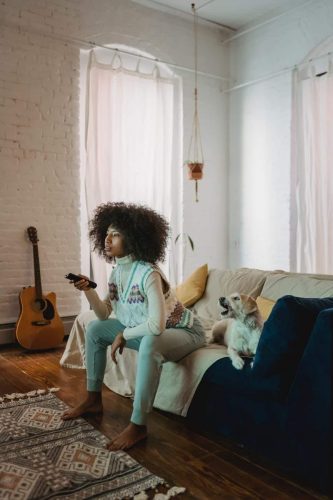
For instance, when a vacuum cleaner is used, it produces about 80dB. When it goes through the wall and ceiling, about 25dB is heard, but when it goes through the ductwork, the transmitted sound to the next space is around 40dB.
A structure-borne sound is also known as impact noise. This is caused by the impact of an object on another surface. This type of sound waves can travel into the ceiling joists and air cavity until it reaches the next room.
Examples are the sounds produced when the soles of shoes hit the floor, or when a ball is kicked to the wall.
Both these noises should be reduced in order to have better room acoustics. Soundproofing your home theater room will reduce sound traveling to the adjacent rooms.
Effective Ways to Soundproof Your Home Theater
There are many ways to soundproof a home theater. Our sound engineers state that a combination of technique and materials will lessen the sound transfer from your home theater room to the neighboring spaces.
#1: Acoustic Panels
The most common method to soundproof a home theater is adding mass. This prevents sound energy from getting absorbed by the walls and creating unwanted vibrations. Adding layers of drywall can disrupt sound transmission especially for low-frequency sounds.
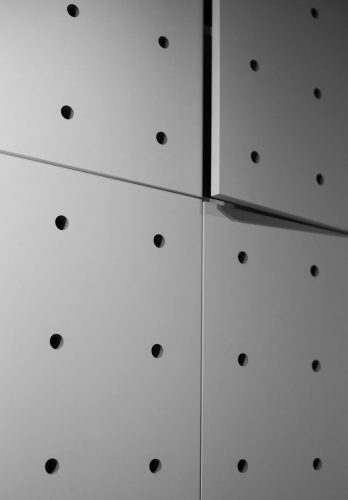
But a popular method for home theater room soundproofing is the installation of acoustic panels. Adding mass by installing an acoustic foam functions as a sound absorber which reduces vibrations and echoes at the same time.
These panels are made of mineral wool or foam. When sound waves reach them, the pores vibrate which is then converted into kinetic energy. The kinetic energy cannot stay in the panels so it is released in the form of heat, leaving no more sound or vibration in the panels.
These panels are the go-to choice by many people. They are very easy to install and may come in different designs. They are also available online so it is very easy to purchase.
#2: Sound Curtains
Sound curtains are also a choice for some people. These curtains are made to reduce noise coming into your room like the noise from barking dogs or those from city sounds like moving cars. They are also meant to improve acoustics by reducing echoes.
It works like acoustic panels by absorbing the sound waves. They are made of heavy and thick fabrics, so aside from sound, they also greatly lessen the amount of light entering the room.
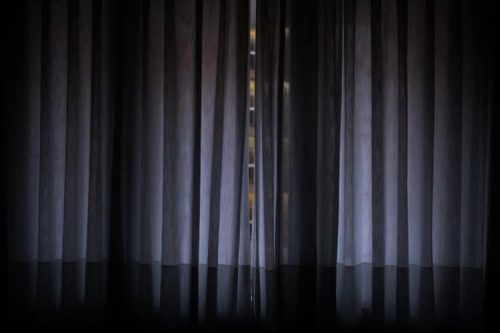
A good example to see the big difference of having sound curtains is when you play sound inside a bathroom, sound waves reverberate a lot and produce echoes. However, if you play the song inside a closet, the sound waves are absorbed by the clothes so you hear a quieter sound.
A common misconception about these curtains is that they will completely block sounds from coming in and out of your room. However, in reality, they cannot completely block sound waves from entering or leaving the room.
So if you are hearing a lot of outside noise coming inside your room, sound curtains can lessen these but not completely block them.
The method used by sound curtains is called sound damping and absorption. This is also effective for low-frequency sounds. They are best used in conjunction with other soundproofing methods like added mass.
#3: Thick Carpeting
The floor is often overlooked when doing soundproofing in the rooms. However, our experts say that leaving the floor bare is one of the biggest mistakes you can make. As nothing can absorb them, it makes the sound travel downwards through the air cavity in the floor.

Laying down some carpets or thick rugs can greatly reduce the impact sounds of your room which can compete with the sounds coming from your audio system. Some people even choose wall-to-wall carpeting to greatly reduce vibration and echoing.
When choosing a carpet or rug, choose thicker ones as they will provide better sound absorption. If thick ones are not available, adding an extra layer may provide better absorption. However, if adding these home theater soundproofing materials is not enough, the addition of soundproof underlayment may do the job.
Underlays can vary from rugs to foam materials. They go under the carpet so you’d have to measure your carpet first. Thick carpets with underlay are usually used together with green glue soundproofing for best results.
#4: Insulation
Soundproofing insulation materials are used to prevent the transfer of both impact and airborne noises from inside the theater room to the outside. These are made of thicker materials than normal thermal insulators as they need to be able to absorb sounds, even the low frequencies.
Sound insulation is also called acoustic insulation. These materials can be installed on walls and floors. When attached to the walls, they prevent the transfer of sounds to the adjacent rooms. When installed on floors, especially on higher floors, they help keep the lower floors quiet.
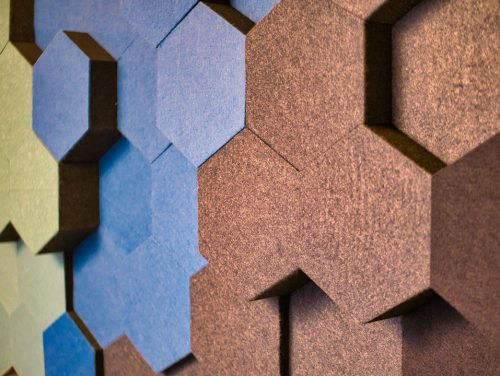
Since these sound insulation materials are thicker than regular thermal insulations, they also provide thermal regulation which reduces heat transfer from one space to another. If you love listening to loud music with good bass notes, then installing insulation batts is necessary to avoid disturbing other people.
#5: Zero-Sound Drywall
Traditional drywalls are able to muffle sounds out but they cannot completely prevent sounds from going in and out of the room. Most common drywalls are composed of a solid granite core in between two layers of paper.
This allows them to absorb some of the sound waves that hit them. To enjoy better home theater soundproofing with your drywall, you need to build thicker walls or add insulation along the wall cavities.
However, newer technologies are available now that use additional materials so the drywall is able to prevent sounds from escaping the room. This is the Zero-Sound Drywall. There are a few companies providing this technology.
QuietRock uses a three-layer design. They use two gypsum layers that sandwich a viscoelastic polymer. The term viscoelastic comes from its elasticity like that of rubber with a viscous quality. This polymer is sound energy and sound waves better than any other material.

Other zero-sound drywall available is Certain Teed and National Gypsum. When correctly installed, zero-sound drywall will outperform regular thickened drywalls or the application of green glue between layers of regular drywall.
#6: Mass Loaded Vinyl
One of the most popular soundproofing materials being used is mass-loaded vinyl (MLV). It is a limp mass that functions to add weight to the existing wall in your room. This material is also quite heavy, measuring a pound per square foot, and is made of vinyl with a lot of metal particles.
This material is denser than natural or synthetic rubber. It has a higher ability to absorb sound waves [1]. Given its elasticity and viscosity properties, once sound waves bump to it, it is just able to absorb it without changing the original shape.
Due to these properties, it can absorb airborne and impact noise effectively. However, vinyl is not aesthetically pleasing. Some engineers lay it inside drywall so it’s hidden from plain sight but this would mean that you have to disassemble the wall first.
To prevent disassembling the wall, you can just lay it on the walls and paint it over. Other uses of this material include carpet underlay or floor underlay.

You can also install it on gaps and cavities inside walls to increase soundproofing abilities. However, to keep it in place, you can use glue or studs.
#7: Bass Trap
Bass traps are usually used to improve sound quality from your audio systems. However, they are also used in sound dampening to block any excess low-frequency notes. They are able to absorb bass sound and convert it to heat energy which will dissipate from the material.
As they don’t have much mass, the soundproofing ability is not as superb as insulations. But they are excellent in handling and absorbing long wavelengths, such as bass tones. Hence, bass traps are usually used together with other materials like insulations and panels.
They are usually installed in room corners as this is where low frequencies build up. To properly fit the corners, they are typically in triangle shapes.
#8: Acoustic Sealant
Acoustic sealants adhesives are used to seal gaps where sound may escape. The flexible sealant absorbs the vibrations created by these waves. Acoustic specialists swear by the effectiveness of this method.
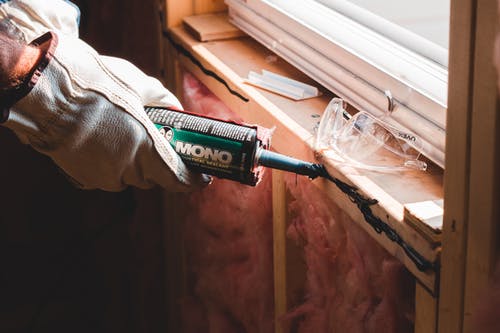
One good thing about the use of acoustic sealant is that it is paintable. Hence, the sealant can be painted over for it to blend well with the wall or window’s color. Most are non-flammable and are easy to clean up.
Acoustic sealants are can adhere to any surface so you can use them anywhere. It is commonly used to line up room corners, electrical outlets, and door frames to prevent sounds from escaping in these parts.
Building a Soundproof Home Theater
Ceiling
Some people install egg cartons to their ceilings to act as sound diffusers. However, this method is not very reliable in blocking transmission. They prevent waves from interacting directly with the ceiling but don’t absorb them completely.
Panels are also installed in ceilings as they add mass to absorb vibrations. The use of isolated studs in ceiling materials can prevent sound transfer.
When installing the ceiling, you can opt to use soundproof drywall or multiple layers of regular drywall. This will absorb vibrations and prevent the sound from leaking outside the room. However, you have to make sure every gap is sealed.
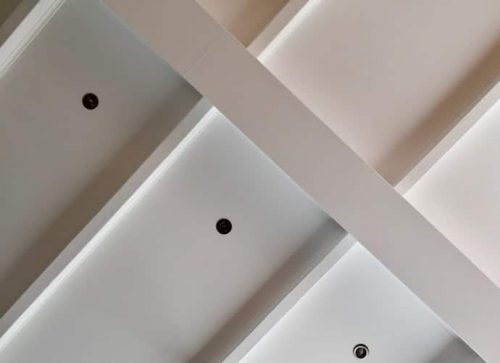
Acoustic tiles are also easy to install in the ceilings. You need to attach them using metal chips or glue that has sound-absorbing properties.
Walls
The easiest way to soundproof a wall is to add mass. Adding insulation is one method as it allows the sound to be absorbed and prevents it from escaping the room. Sometimes, decoupling techniques are needed to be employed in soundproofing the walls.
Decoupling creates a cavity as the two sides of the walls do not touch anymore. Creating space between the two walls allows the sound to lose energy when traveling so it no longer escapes the room.
For some rooms, decoupling fully is not possible, so our experts suggest using decoupling materials to fill in the cavity. These materials include insulation, green glue, and MLV.
Other possible methods in soundproofing walls include the framing options: staggered stud wall or single stud wall. Regular walls use a rigid mass of lumber from framing. Each lumber is attached to the top and bottom plates at a regular distance of 4”.

People use a resilient channel. This is one of the cheapest decoupling materials out there. It is made of flexible metal material so installing it is very easy.
Sound baffles can also be installed in walls to minimize airborne sounds and reverberations.
Doors
A good theater room also has a good solid core door to prevent sound transmission. The application of a thin roll of foam on the door jamb can help prevent sound from escaping the room. This method is called weatherstripping.
Windows
Soundproofing windows can be done using a variety of methods. The easiest way is to install soundproof curtains. This is not very reliable in stopping sound transmission but can dampen sounds before it gets out of the room.
Another is to create a window plug that is composed of different soundproofing items like vinyl, isolation foams, and glues.
FAQ
Which soundproof material is best for theaters and why?
The soundproof material best for theaters is mass-loaded vinyl. It is composed of a dense material that can absorb sounds effectively. Given its elasticity and viscosity properties, it can absorb the sound without changing its original shape. It can be installed together with a decoupled wall, or just glued on top of a wall.
Conclusion
Soundproofing a room is essential if you want to get the best listening experience without making noise pollution. Our experts suggest different methods for your home theater soundproofing which includes decoupling walls and the use of soundproof items like insulation bates, MLV, green glue, soundproof drywall, curtains, among others.
The post How to Soundproof Your Home Theater? — Everything You Need to Know appeared first on The Product Analyst.
from The Product Analyst https://theproductanalyst.com/home-theater-soundproofing/
No comments:
Post a Comment